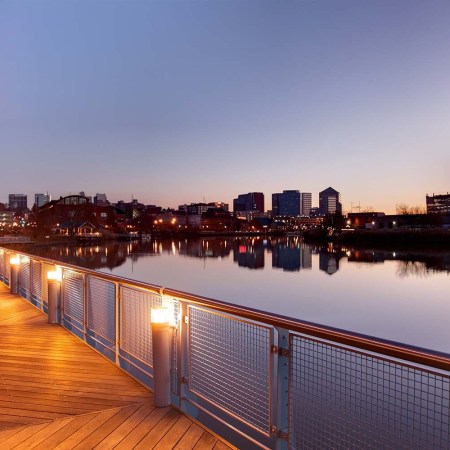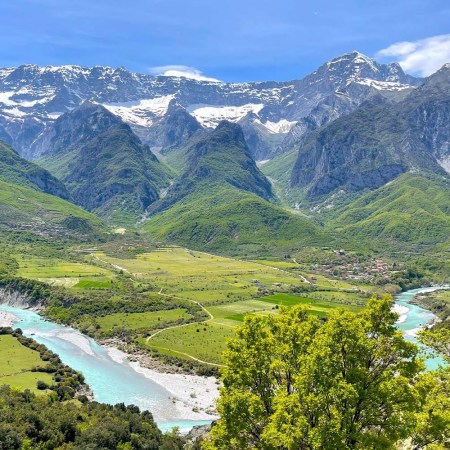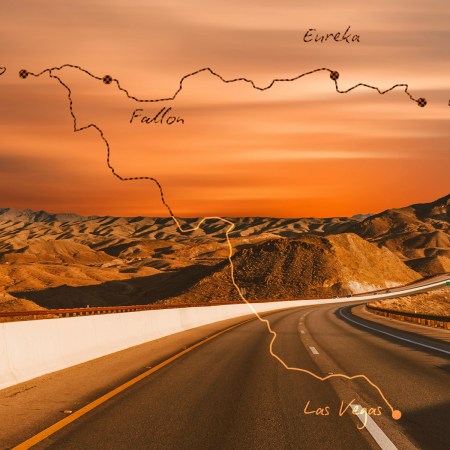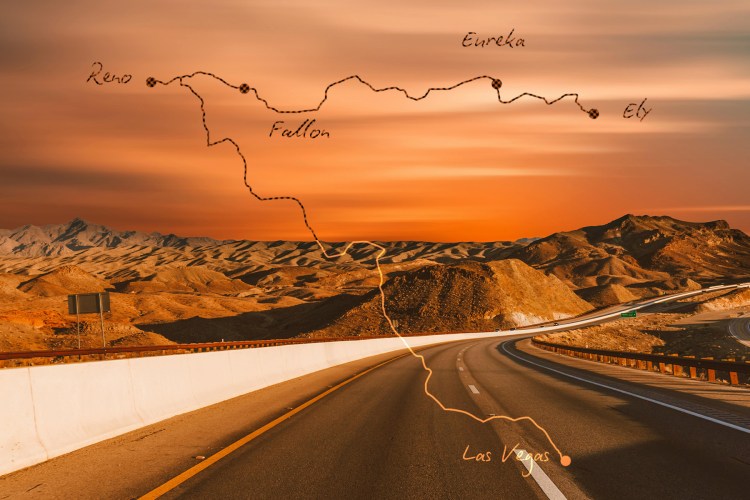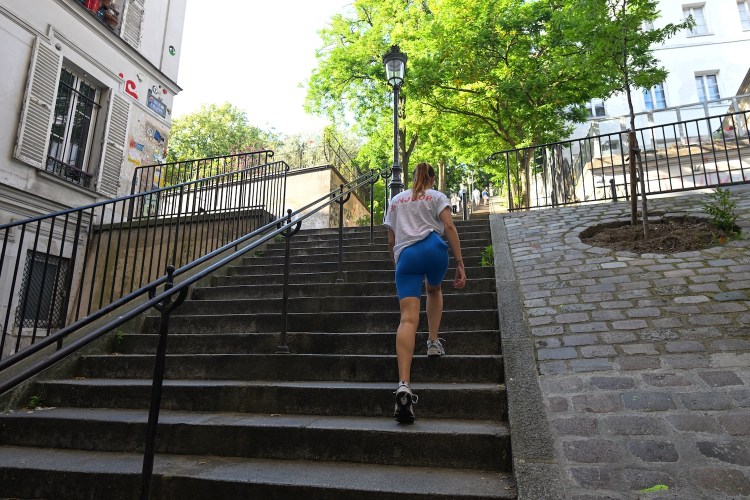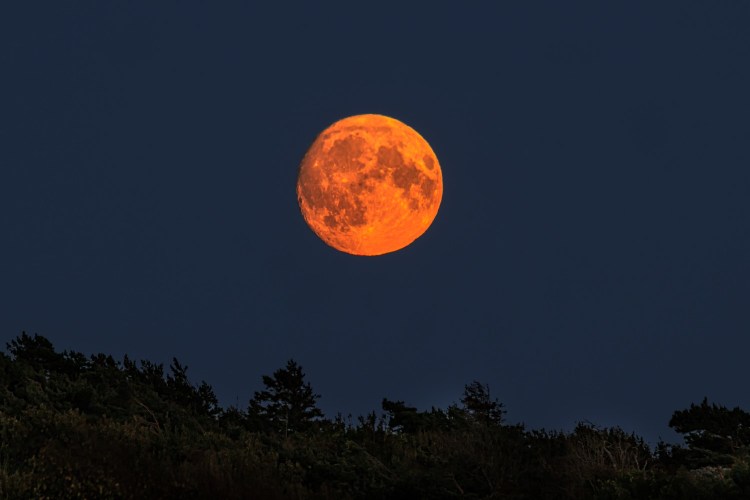Uzbekistan was once at the heart of the ancient network of trading routes known famously as the Silk Road that began in China and touched parts of India before reaching central Asia on its way to European provinces such as Rome and Venice. The country’s ancient silk road history comes enriched with decades of Russian influence, as it was a part of the USSR in more recent times. What exists now is the residual mishmash of centuries of cultural osmosis from the Chinese, Russians, Persians, Turkish and Arabs, and it’s visible in every aspect of this fascinating society, including food, language, faith, art and architecture.
The highlights of this friendly country (which are found practically everywhere) are what I began to think of as the four Ms from the Islamic faith — mosque, minaret, madrasah and mausoleum. And for when monument fatigue strikes, you can always go camping in the Kyzylkum desert or hiking in the Chimgan mountains. Each of the silk road towns of Khiva, Bukhara and Samarkand is peppered with dazzling monuments decorated with tiles of a dozen shades of blue. But here’s what to do with limited time and, let’s face it, limited capacity for admiring cerulean tiles. The Afrosiyob bullet train is a quick and convenient way to travel between cities.
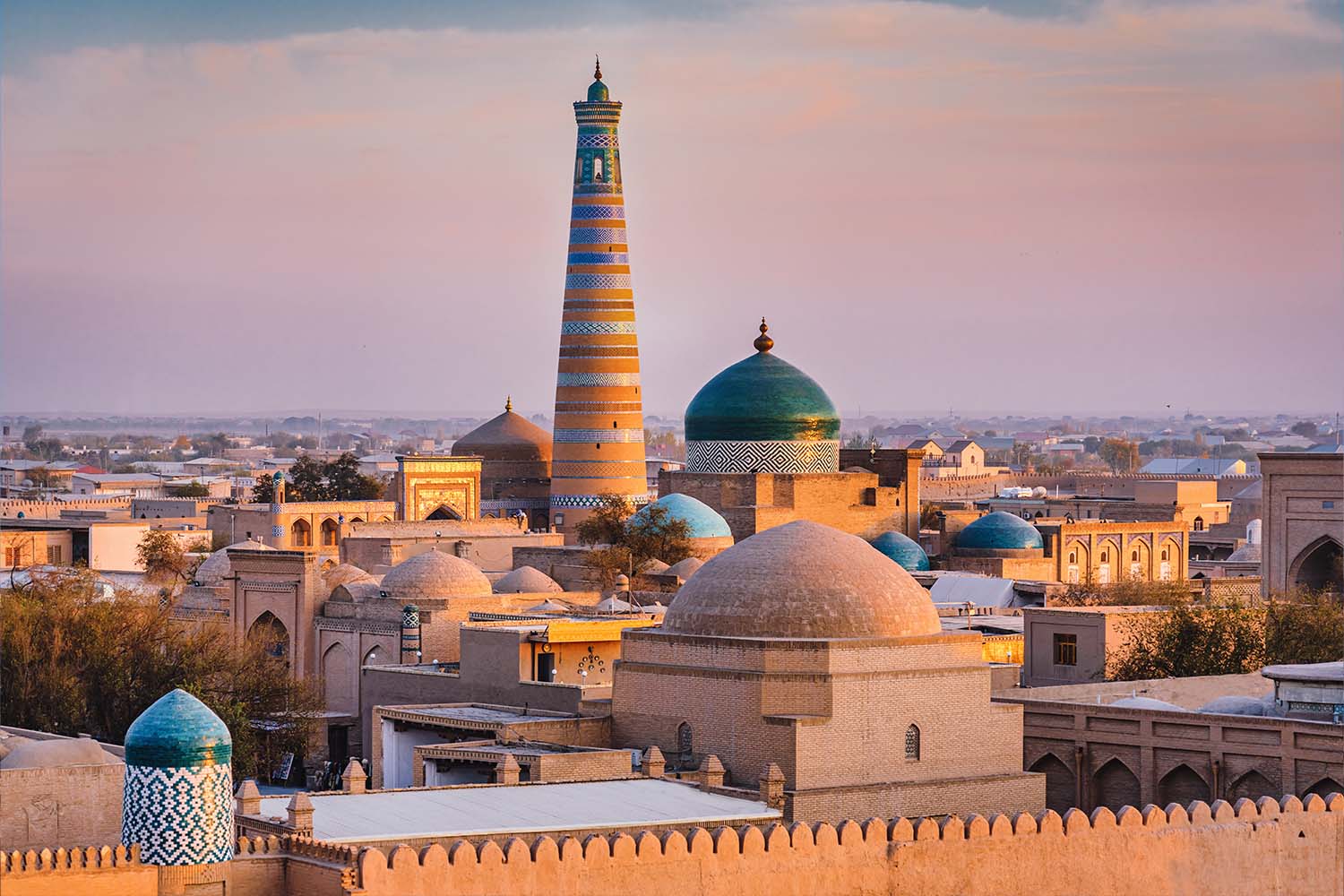
Khiva
You will likely fly into the capital city of Tashkent, but instead of lingering there, take the earliest flight out to Urgench, where Khiva is an hour away by cab. Whispers of cruel marauders and slave traders float in the sultry air of Khiva, where weary caravans once pulled up for food and shelter before setting off on the long desert road that lay ahead. But today, it’s a sleepy town that tourists mostly ignore on their way to the the old walled city of Ichan Kala.
Everything that is worth seeing in Khiva — and that means more than 60 monuments and museums — is contained within the Ichan Kala. This isolation makes it something of a living museum, but with souvenir shops and craft studios rubbing shoulders with splendid palaces and sacred mosques.
Stay: Check into the Orient Star Khiva Hotel, a boutique property inside the Ichan Kala, if only for the experience of sleeping in a late 19th century Islamic school where 250 scholars once studied. Your exploration of the Silk Road has already begun here at the erstwhile Muhammad Amin Khan madrasah.
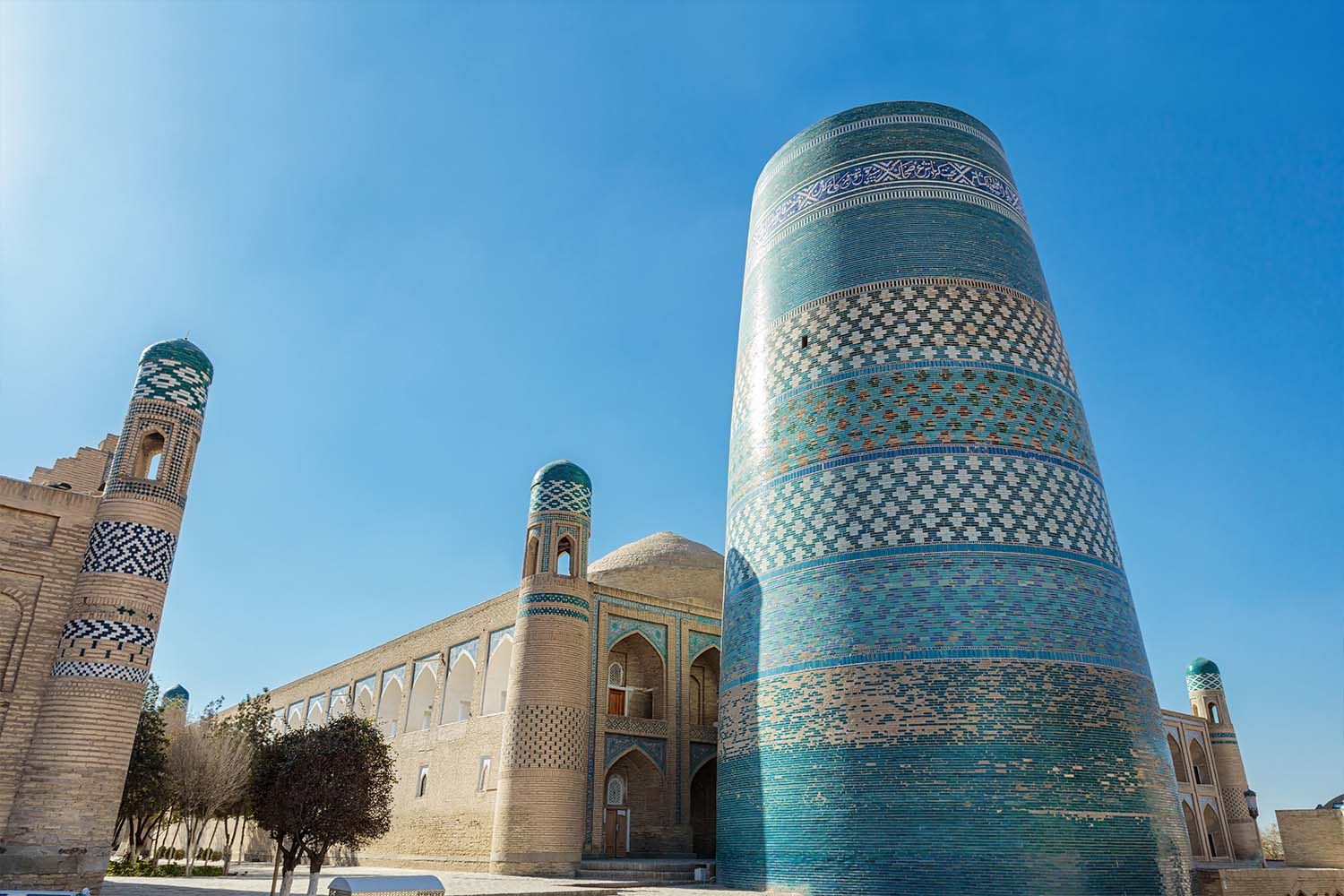
Do: Just outside is the Kalta Minor, the resplendent minaret covered in a lush veneer of turquoise tiles all the way to the top — or, at least to the point where it ends abruptly because the ruler who had it built died before it could be completed. Around the corner is the Kuhna Ark, the Khan’s residence and seat of governance, complete with its own throne room, reception hall, mosque and even a couple of museums.
Pro tip: Be sure to come back late in the evening to catch the sunset from the top of the watchtower at the ark (reached through a flight of narrow, steep steps). Seeing these ancient monuments coated in a dusky pink is an unmissable experience.
If you need a break from all the blues, the Juma Mosque — with its prayer hall featuring 218 carved wooden pillars — provides a clean and cool respite. The Pahlavon Mahmud mausoleum is also richly decorated and another such restful spot where the faithful come to pray.
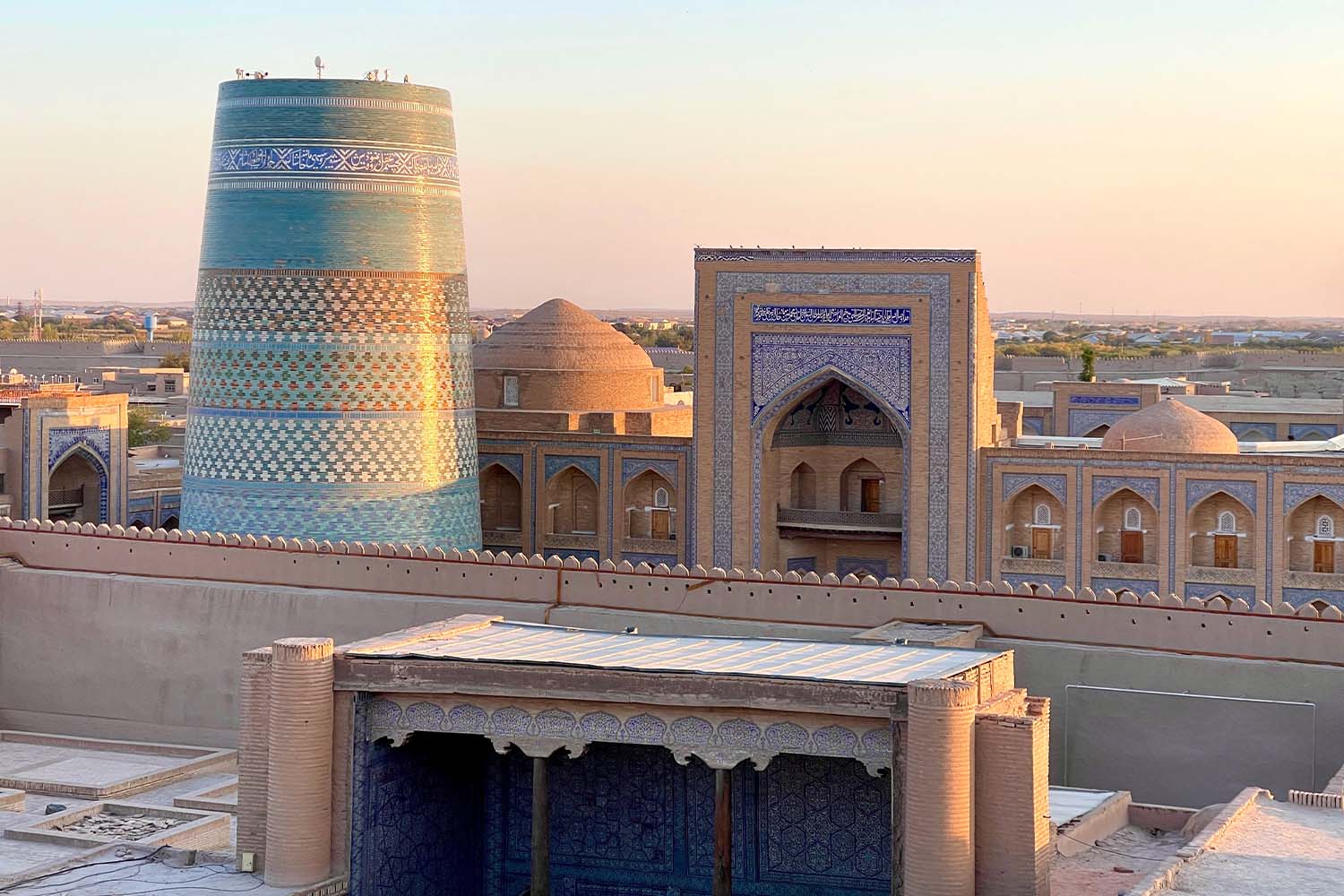
The Tosh Havli Palace — translated rather deceptively as the simple “stone house” — is the absolute star of Ichan Kala, with some of the finest embellishments in its various rooms and courtyards, including the harem where the women lived in seclusion. The Ichan Kala is too much to take in on a single day, so go back the next day (the entry ticket is valid for two days) for a closer look at what you really liked or to check out the dozens of craft workshops hidden within the cobblestoned lanes.
Eat: Find a quiet corner on the open terrace of Terrassa Cafe & Restaurant for good local food and an aerial(ish) view of Ichan Kala. Khiva’s specialty dish is the emerald green shivit oshi, pasta infused with the flavors of fresh dill, topped with beef stew and served with tangy yogurt sauce. For dinner, book a table at Café Zarafshon for an excellent meal in the shadow of the illuminated Islom Hoja Minaret.
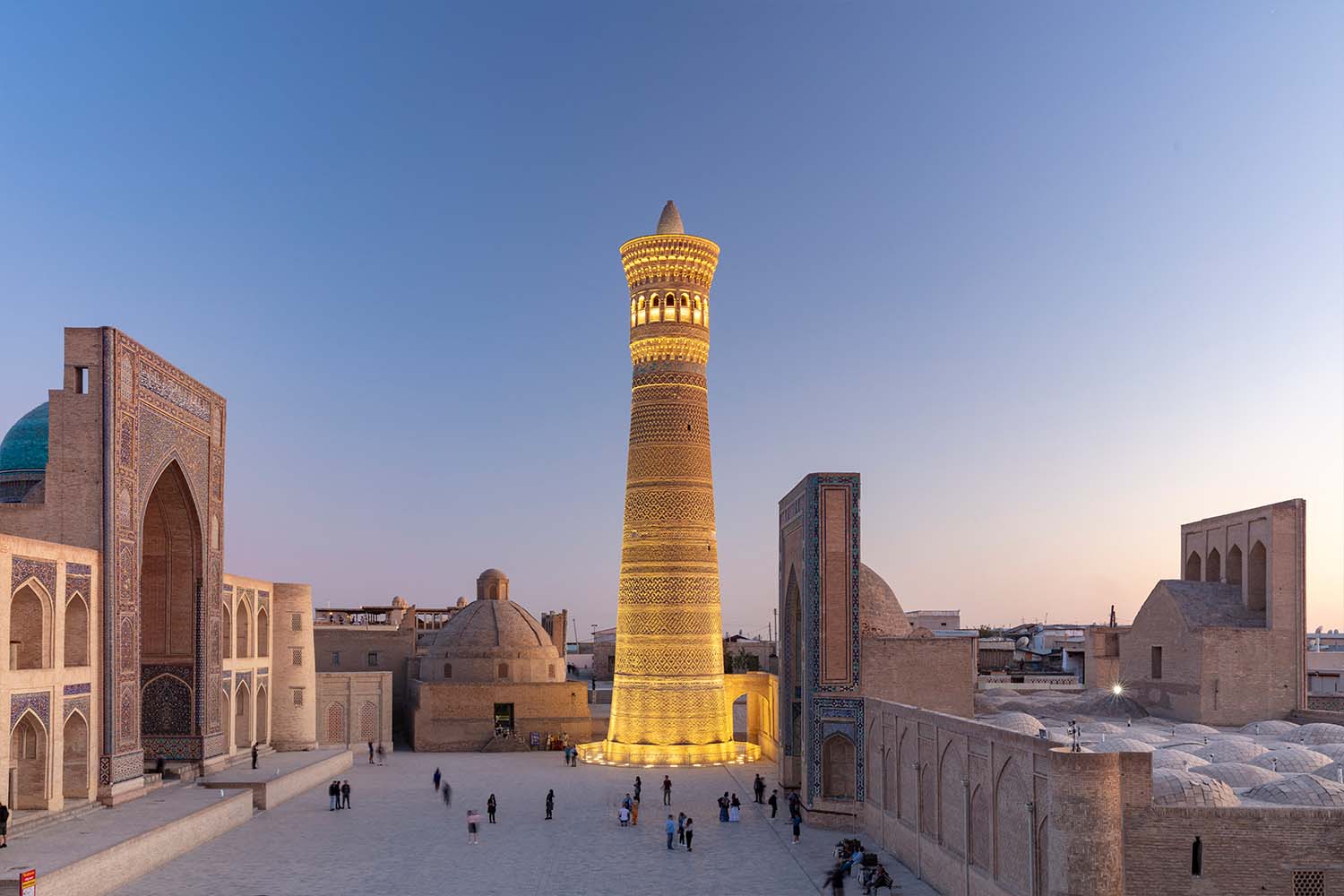
Bukhara
Hailed by UNESCO as the “most complete example of a medieval city in Central Asia,” Bukhara hides some of the most interesting monuments of the age. Apart from the usual suspects, there are also a handful of ancient trading domes, where souvenir and craft shops now beckon travelers much the same way mounds of silks and spices did a few centuries ago.
Stay: The Shahriston Hotel is in a pedestrian-only lane in the heart of the old city, with a traditional façade and modern rooms. It’s within easy walking distance of not just the sightseeing but also the shopping. What more can you ask for?
Do: The historic center is fairly compact, easily covered on foot or by e-rickshaw. Begin with the Po-i-Kalon ensemble, complete with its own madrasah, minaret and mosque. Legend has it that the unadorned beauty of this minaret so moved Mongolian conqueror Genghis Khan that he spared it from his rampage spree across the region. On either side are the Mir-i-Arab madrasah (where hundreds of male students have been receiving an Islamic education since the mid-1500s) and the beautiful Kalyan mosque (with space for 12,000 worshippers at a time).
Pro tip: Walk back to this complex following sunset, after the tour groups have left, to see the minaret all lit up.
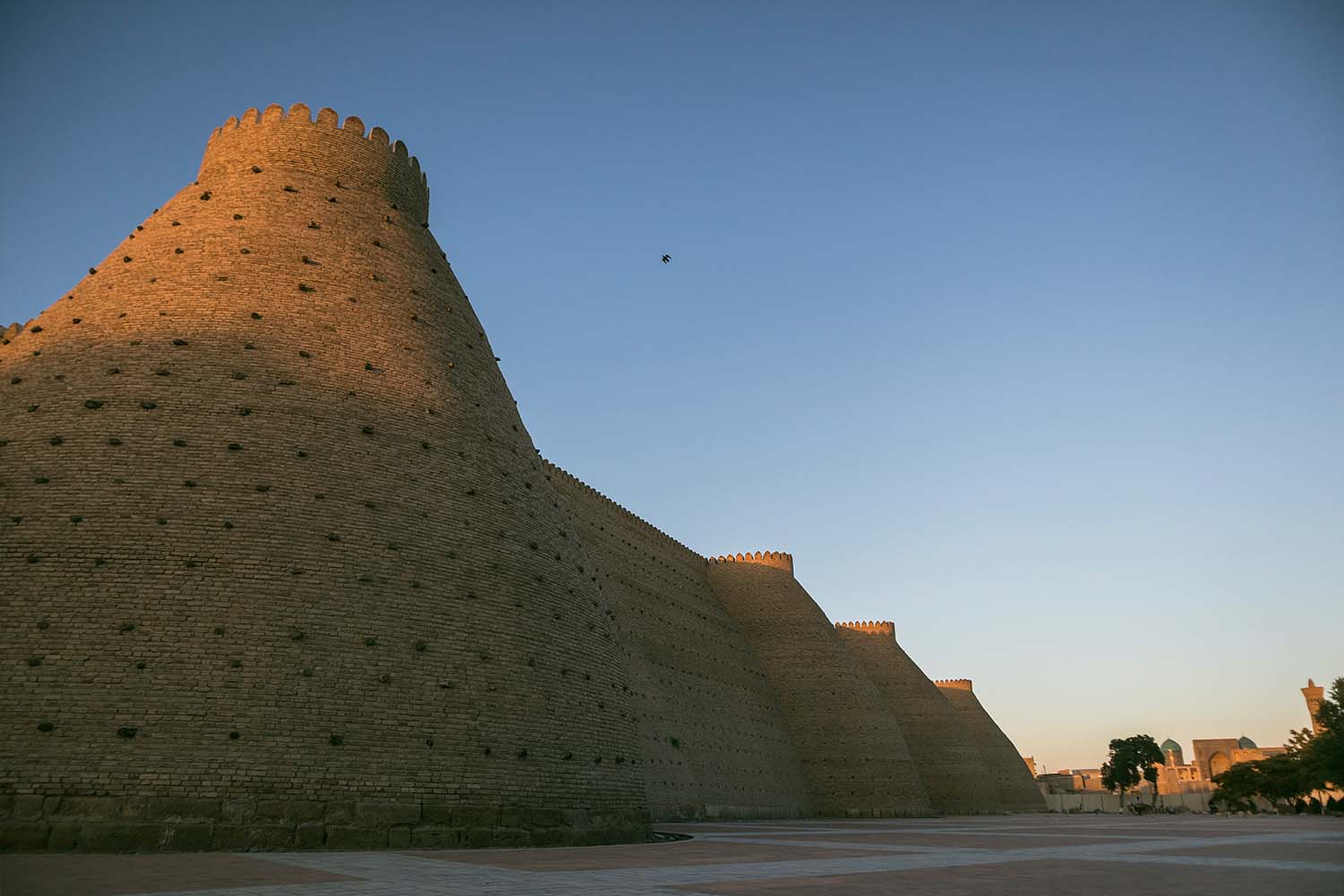
Carry on to the Ark, a stark, brown fifth century citadel that stands like an elevated island looking down upon the busy town. Occupied continuously until 1920, the fortress is now an open-air museum, with an impressive mosque, palaces and open courtyards. But the more exquisite mosque is Bolo Hauz on the other side of the road, with its carved pillars and painted ceilings.
Walk on further to see the Ismail Samani mausoleum built in the dull tone of the desert sand, a somber contrast to the mostly multihued monuments elsewhere. Built in the first century, it lay buried in sand for hundreds of years, uncovered only in 1932 by the Russians.
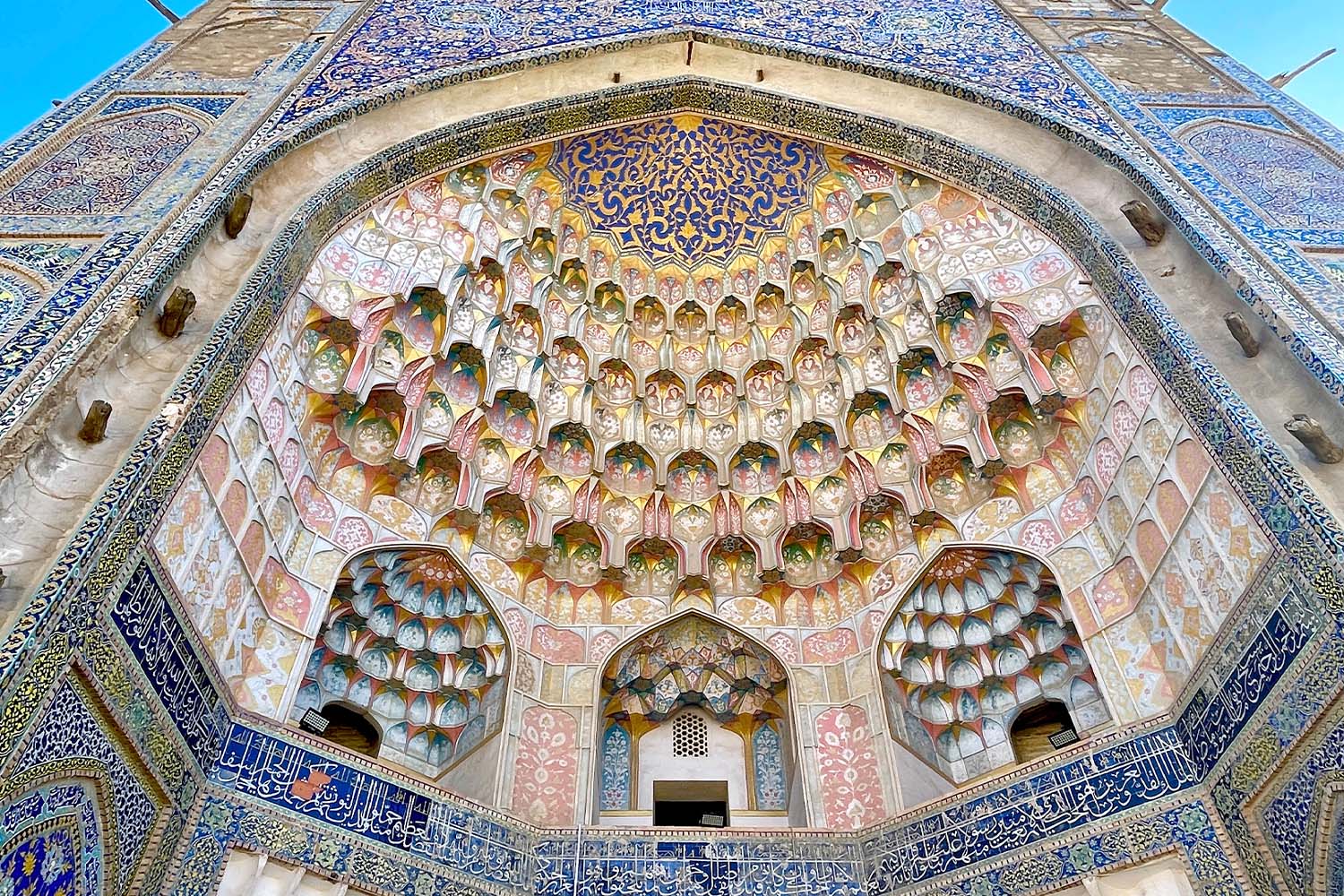
Retrace your steps towards the other side of the old city, through the trading domes — try not to be distracted by the carpets and ceramics along the way — to the Lyabi Hauz complex to admire the Kukeldash madrasah. This area is particularly lively in the evenings when locals gather for coffee and conversations in the adjoining park or at one of the al fresco cafés around the lake.
Eat: The rooftop restaurant of Minzifa hotel is known for fresh Uzbek cuisine, particularly the laghman (hand pulled noodles cooked with meat and vegetables) and manti (dumplings filled with meat or pumpkin). If you’re already tired of local food, then European-style coffee and sandwiches (or pastries for those with a sweet tooth) await at Wishbone Café close to your hotel.
The 56 Best New Hotels of 2023
After spending nearly 300 days on the road this year, our correspondent recommends 56 places around the world to lay your head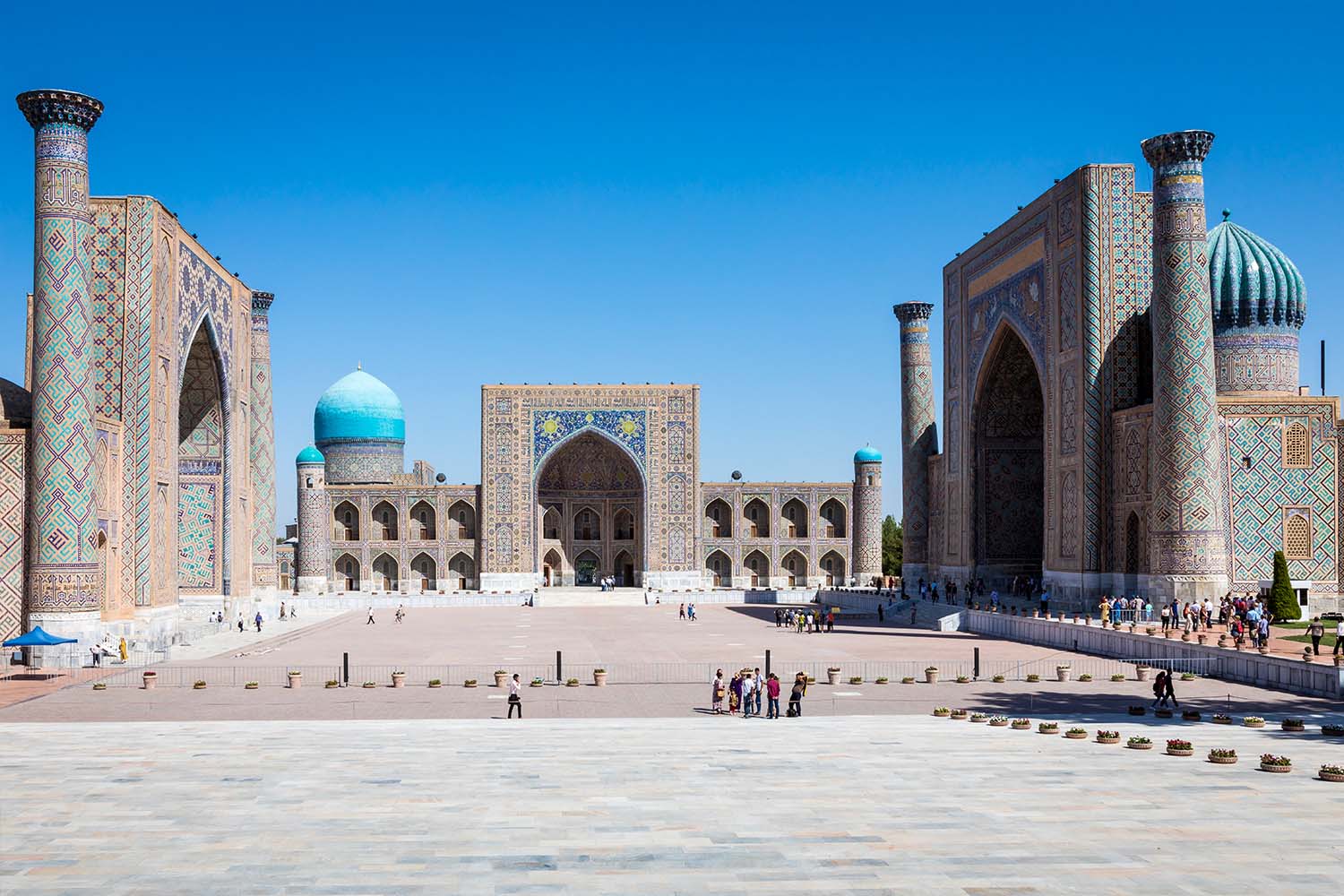
Samarkand
The name itself evokes images of the most glorious aspects of trade along the silk route, and Samarkand truly has some of the most magnificent monuments you will see on this trip. Unlike Khiva and Bukhara though, where the past is secreted away in one corner, this is very much a modern city with traffic snarls and concrete buildings that belie its 2,500 year old history.
Stay: A late 19th century house converted into a family-run guesthouse, Jahongir Hotel ticks all the boxes when it comes to location and service, plus serves a superb local breakfast served in the open courtyard.
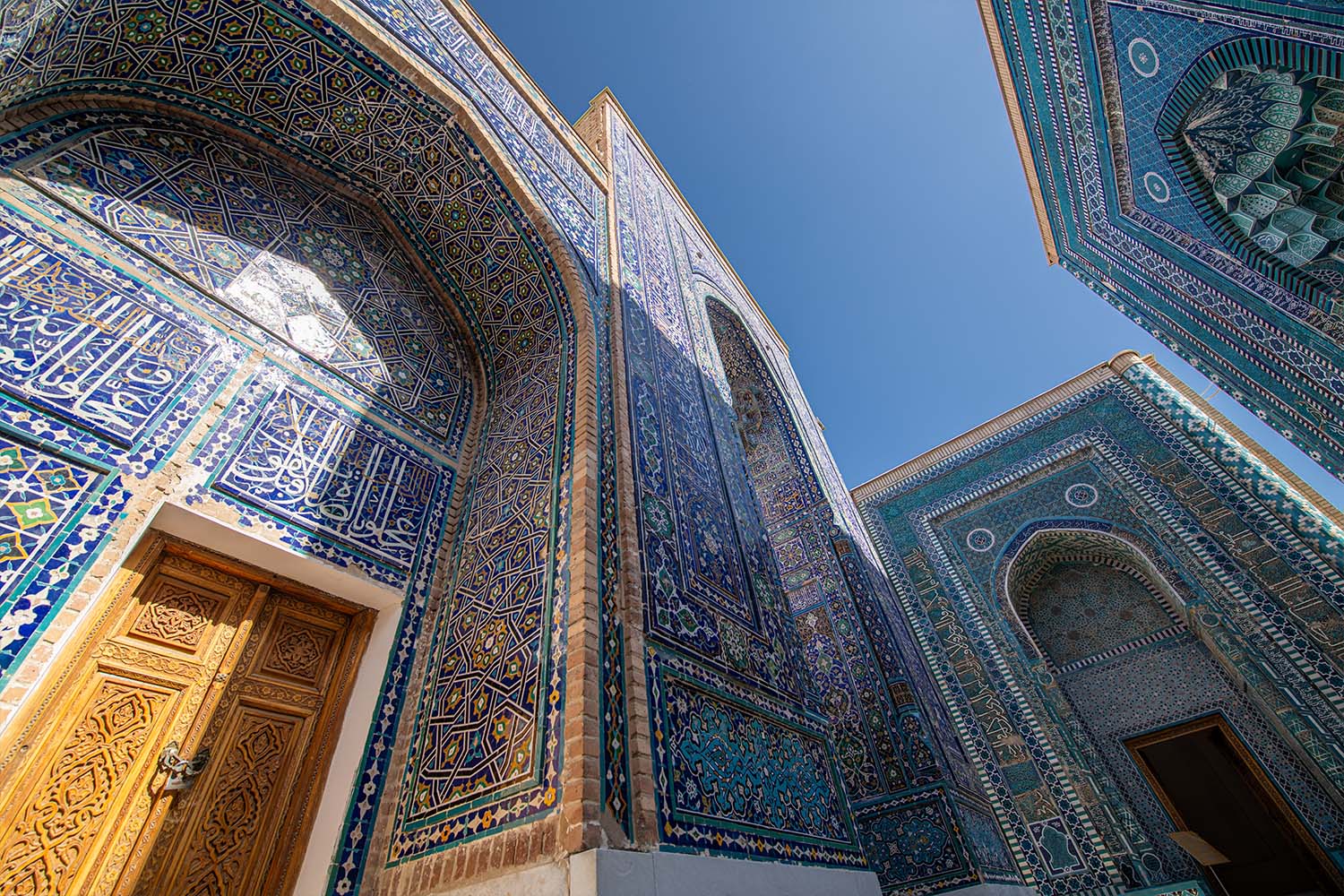
Do: Begin early in the morning at the Shahi Zinda — really, get there by 7 a.m. when it opens — for great photos without 100 rogue legs and noses bombing those memorable frames. The morning sunlight falling on these blue façades makes them shine with a muted gold glaze that will make you gasp. Go on, you can thank me later. This most remarkable of sites is a necropolis, an avenue of mausoleums, each decked in utterly exquisite blue tiles, several shades deeper than the cheerful teals and aquamarines of Khiva or Bukhara.
Your next stop should be Gur-e-Amir, the final resting place of Amir Timur (known in the west as Tamerlane), the much feared and loved 14th century ruler. The ornate walls and ceilings of this mausoleum are a fitting tribute to this most influential of Uzbek heroes and his descendants.
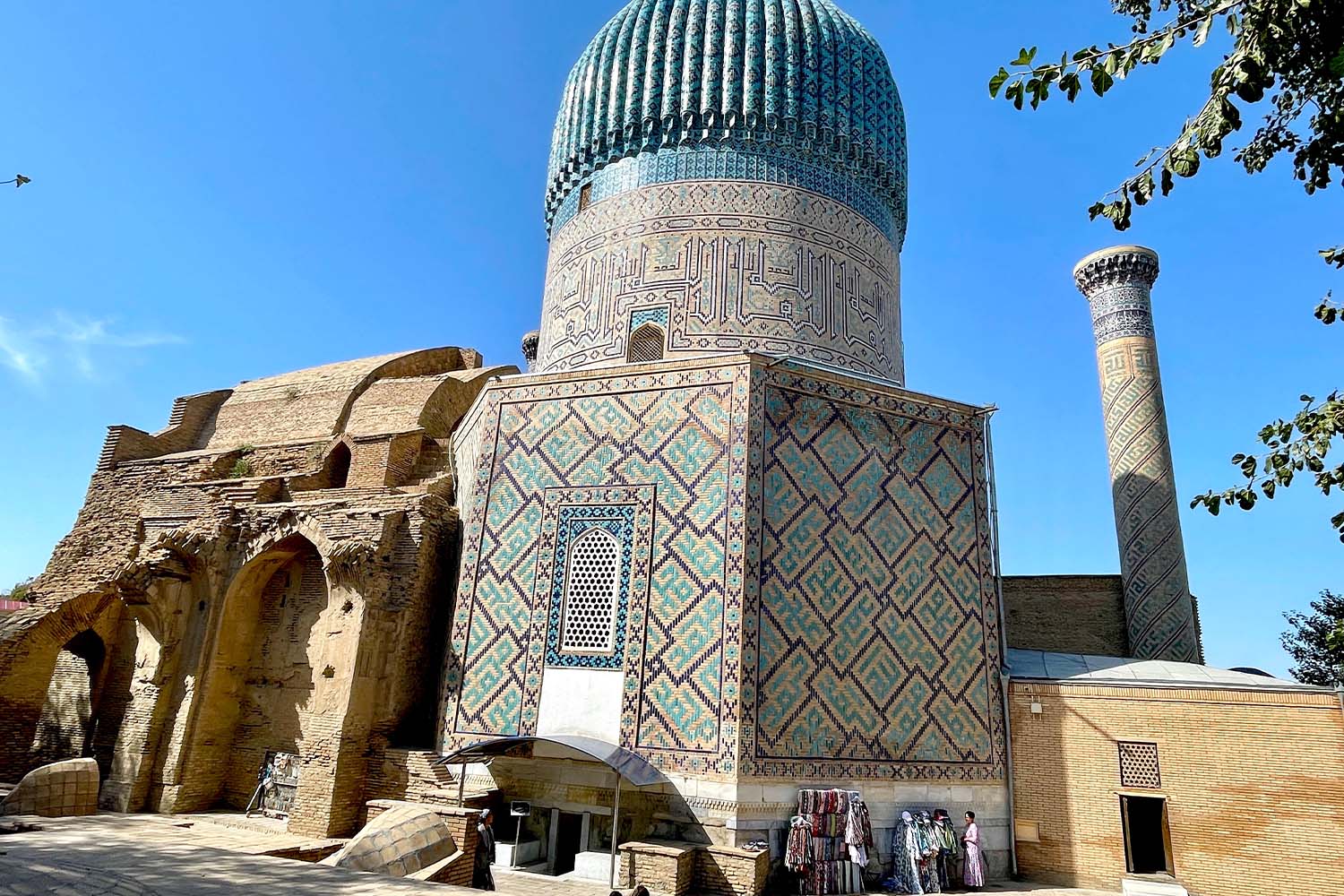
Finally, head to Registan Square, an open plaza fringed on three sides by the elaborately adorned Ulugh Beg, Sher-Dor and Tilya-Kori madrasahs. Translated roughly as “sandy place,” this was once a thriving marketplace, given its location somewhere midpoint along the silk route. Souvenir shops have taken over the interiors, and you might be tempted to rush past them, but it’s best to slow down and savor the colors and designs on the tiles inside and outside these madrasahs.
Pro tip: Try to get there late in the day to see them in a soft glow, and stay back to enjoy the spectacular light and sound show that comes on every evening.
If you have the time, there are several other monuments worth checking out, particularly the Bibi Khanym mosque (built by Timur’s favorite wife) and the Ulugh Beg observatory (built by Timur’s grandson, an expert astronomer). But if you are all monumented out by then — understandably so — skip them and instead sit down with a chilled beer.
Eat: It’s almost illegal to leave Uzbekistan without trying their national dish of plov — mildly spiced rice cooked with fatty beef, onions, yellow carrots and, occasionally, raisins. And locals swear by the unassuming Samarqand Osh Markazi in an untouristy part of town (best to ask your hotel for directions). For a fancier dining experience, Platan has lovely outdoor seating and serves excellent kebabs and a hearty mastava (a local meat and rice soup).
Travel planning: Make your Uzbekistan trip happen with the central Asia experts at Voygr, which promotes responsible travel through the region.
This article was featured in the InsideHook newsletter. Sign up now.


